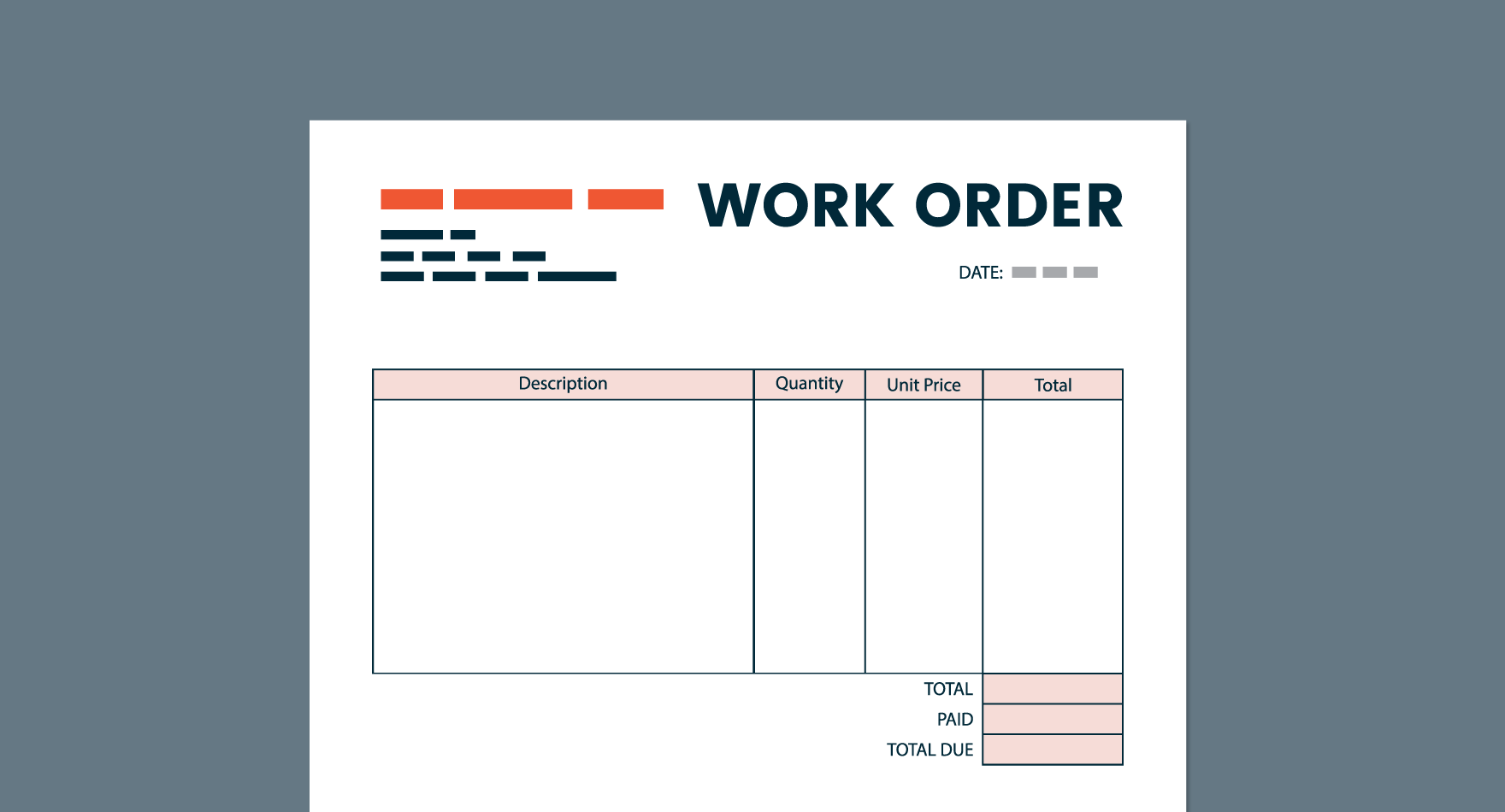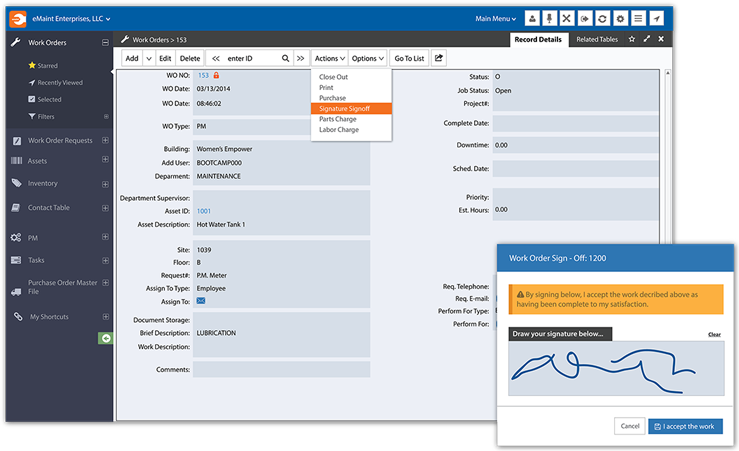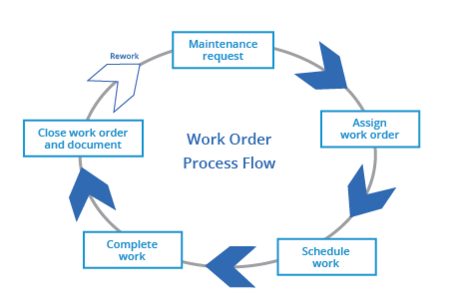What Does A Work Order Software Do? How Could Your Firm Benefit By Using It?

What Does A Work Order Software Do? How Could Your Firm Benefit By Using It?

Work orders are required for numerous maintenance tasks in an organization ranging from preventive to breakdown maintenance, and keeping track of them can be very difficult.
It is not feasible to use traditional paper-based physical work orders that can get lost or torn away. Moreover, checking each item can be difficult, especially if you need documents from yesteryears.
However, using a work order software allows you to easily have a work order system in place, which can keep up with scheduling and reviewing maintenance tasks.
What Is Work Order Software?
Before understanding the convenience a work order software can bring to your organization, you must understand the basics of work order software.

There are two types of work orders— external and internal.
External work orders are sent by a client or a customer, whereas internal orders, as the name suggests, is an order for in-house maintenance or contractor work.
Work order management deals with sending these work orders to the respective person at the right time, with the proper specifications, quantities, and rates. A work order software is a management tool to help organizations follow preventive maintenance date.
It also looks for any outgoing and incoming order, which is mostly some maintenance work. According to key performance indicators, these orders are categorized based on their criticality and preventive and corrective maintenance.

What Does A Work Order Software Do?
A work order software helps create, track, assign, and report work orders, enabling the maintenance department in the industry to handle many different tasks, such as:
- Estimation and tracking of costs arising from labor, parts, and other expenses.
- Following safety procedures
- Tracking downtime, idle time, and breakdown time loss
- Assigning labor hours and displaying expected workflow
- Displaying remaining expected work on a daily, weekly, or monthly basis.
A work order maintenance software is dynamic and keeps updating in real-time. Hence, you will always get notifications for new updates and will never miss out on work orders. You can focus on more proactive and preventive maintenance by scheduling it based on machine hours, or the number of days, to keep the machine in good condition, thus eliminating the need for corrective work orders.
Work order software also helps in maintaining compliance with regulatory boards, thus saving a lot of money.
What are the Benefits of Using a Work Order Management Software For Your Firm?

Eliminating Paperwork
A work order software can help you take advantage of various tools to streamline and automate the process of getting the work order.
The software aids in the reduction or complete removal of errors in the order copy, send duplicate order copy or identify and rectify any other problems in the order copy.
Unlike traditional pen and paper method, which can not cope up with the number of orders, you can schedule and generate work orders based on priority, and keep updating them as new orders come in.
Creating multiple hard copies of the paperwork can be very time consuming, as well as expensive. Moreover, papers occupy a lot of space and stuff the shelves with loads of unsorted files that are no longer required.
Since the work order management software allows access to everyone to view the work orders across multiple devices, you no longer need a physical work order copy.
Knowledge And Analytics
A maintenance work order software contains all information on every maintenance activity that has ever been committed. It also captures data of current maintenance activities for analysis and reporting.
The information can help you in the following ways:
- Identification and review of high maintenance cost processes
- The data will help you to enhance stocking levels and forecast the demand for specific spares
- Reduce operational and breakdown costs by focusing on preventive and predictive maintenance
- Stay in compliance by generating reports required by regulatory bodies
By fine-tuning a work order maintenance software, a manager can automate much of the process that once took a lot of coordination to put into place. This is coupled with higher cost savings and efficiency levels.
Managing Inventory
With a work order management software, creating similar types of work orders can be a piece of cake using copy and paste. You can check the components of the product, and check the inventory of the material for the restocking of maintenance supplies before it dips below the buffer level. This prevents work slowdown due to machinery breakdown.
Reducing Overtime
Bad equipment can significantly hamper productivity with machinery downtime and losses in the manufacturing and production of goods. In such instances, due to the slow work, you may have to grant overtime fees to employees, which will enhance your cost in overhead expenses.
Enhancing Productivity
If a piece of equipment undergoes preventive maintenance and servicing, there are high chances of a decrease in productivity. With a maintenance work order, IT users can receive and create work order tickets online without any impact on productivity.
Control Of Access To Information
Different users have different permissions for the data.
While some employees of the firm can validate data, some others can change the data. But one thing is for sure; everyone is aware of the process cycle and their job roles. It not only makes users feel assured but also increases their job satisfaction level.
Detailed Data and Improved Budgeting
Work order software provides you with a complete order of items for maintenance tasks over time. Depending on the Key Performance Indicators (KPIs), you can create a budget for your maintenance program.
Everyone is on the Same Page
Everyone in the process knows where the organization stands in real-time due to greater connectivity and communication. Hence, you can mitigate problems with ease.
What Happens After Work Order Generation?
After the commissioning and implementation of a work order software, the firm moves into work planning. Work planning includes:
- Evaluation of equipment history
- A work plan based on previous work orders or any new specifications
- Division of the work among different contractors, according to their line of work
- Inventory search for the bill of materials and reservation of any spares against the work order
- Creating purchase orders for required materials not available in stock
- Scheduling and designation of tasks
- Approval routing
Conclusion
A Work Order is an essential document for any institution since it provides a viewpoint of the requirements. A Work Order Software can help analyze, assess, and schedule different work order tasks based on their priority.
It helps boost efficiency, enhance productivity, prepare a budget, and, most importantly, keep everyone in touch with the work order process to solve complex problems.
